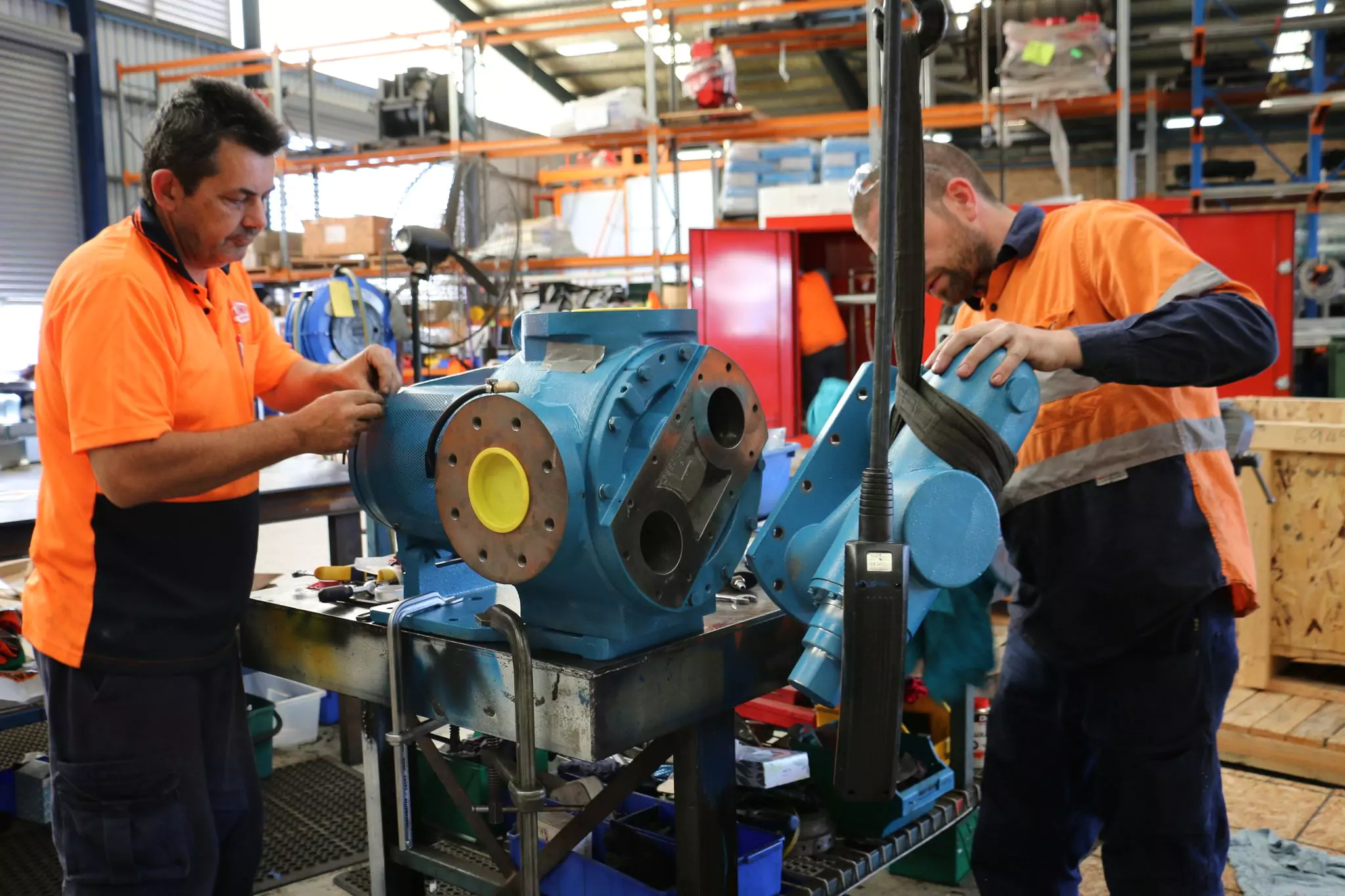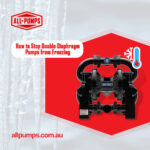Cutter Pumps or Grinder Pumps?
Every state and every city should start reassessing their sewer systems and pumping equipment to finally put an end to the gross flooding caused by clogging and ragging from flushing solids down the drains and toilets.
Many municipalities in the country still suffer from flooding caused by blocked sewer lines.
The main culprit?
The flushable products are used in households and commercial establishments. While toilets and drains can suck them down the pipelines, when they come to the treatment facilities, these items cause clogs to most pumps.
The Result?
A water treatment facility downtime that causes wastewater to stay stagnant on the sewer lines for a time while an influx of waste continues, thereby resulting in pipe failure and flooding.
The global water conservation movement has effectively lowered water consumption in all sectors in the past decade. However, an adverse effect of this effort is the decreased amount of water carrying solid waste down the sewer lines to the treatment facility. This has been causing undue strain on aging pump systems by pumping more solids than water, leading municipalities to put pressure on the pumping industry to come up with new and effective solutions. And to compound the problem further, some municipalities demand cheap construction methods. Unfortunately, this “value engineering” rather produced wastewater facilities equipped with inappropriate or inadequate pumps to handle clogs.
Clogging Problems in Sewage Treatment
The birth of flushable products like wet wipes, toilet scrub pads, and paper towels among others is offering great convenience to consumers in cleaning up household and commercial messes. On the contrary, these products are causing a major headache for pump operators in the wastewater treatment industry.
Pumping stations in wastewater treatment systems handle raw sewage from different sources. With the growing number of flushable products sold on the market, the conventional centrifugal pump is no longer enough to handle large amounts of solids. Not to mention, the long strips of ropes and cables that are thrown through the drain. Not only do these items cause hard-to-repair damages on pumps, but they also account for expensive maintenance calls and a multitude of other pump problems.
To cite, New York City spent a whopping $18 million from 2010-2015 just on pump-related issues.
The Cause?
Flushable wipes that did not break down properly at their sewer system.
Many other cities around the world are experiencing the same. Some are pointing out the inefficiency of centrifugal pumps in handling abrasive grit and a variety of other solids found in wastewater. As you know, centrifugal pumps have an intrinsic design that features a rotating impeller with critical tolerance against the pump casing. This fixed tolerance makes it difficult for solids to pass through. Now, when cloth-type items, ropes, or cans enter the pump in full size, they often get stuck, causing clogs and impeller erosion. Operators then need to take out the pump to rebalance it or in worst clogging and ragging cases, replace it entirely.
Since flushable products are now a part of many people’s routines and it will already be difficult to discontinue them, pump innovators came up with comminutor equipment in the form of grinder and cutter pumps to resolve this lingering problem.
But are these pumps really able to break up solids than normal centrifugal pumps cannot handle? Are they the long-awaited solutions to the sewage system disasters caused by flushable products? Should you have one or should you have both?
All the answers we’ll be discussing below.
Solving the Problem with Cutter or Grinder Pumps
Solids in Wastewater
Solids in wastewater are unavoidable. While this is a major problem in treatment facilities in the past, the emergence of innovative cutter pumps and grinder pumps has resolved the common issues of clogging.
The right solution to acquire depends on the common type of solids handled by your facility. Is it collecting waste from households where tissues and wipes are the common sources of clogging? Is your facility in charge of collecting waste from commercial establishments where tin cans, oil, and bigger flushable products are the problem. Or is it the end destination of industrial waste where stubborn grease and abrasive materials go with the wastewater?
To help you decide on the right equipment for your facility, let’s look at the functions of each of these pump types.
Cutter Pumps
Cutter pumps are engineered to handle heavy-industrial waste, raw sewage, and general wastewater classification. Their design eliminates chances of clogging commonly caused by oversized materials such as aluminium cans, plastic bottles, cables, ropes, fabrics, and all flushable products.
High-end cutter pump models are usually equipped with tungsten carbide cutting blades brazed onto the edge of impeller vanes. The blades run close to the suction cover. Running in tandem, they cut all incoming materials into small pieces, making it easier for the pump to move the wastewater to the discharge.
Cutter pumps used in high head applications typically come with motors running at 3600 RPM. For high flow applications and high torque cutting requirements, motors with 1800 RPM are usually used.
Grinder Pumps
Grinder pumps have a cutter wheel at the suction port that acts to macerate garbage until it is chopped finely and pushes out through the discharge. It is a powerful piece of equipment to shred rubber goods, fabrics, plastic bags, and other difficult-to-pump solids that come with wastewater.
These are the pumps of choice in small diameter pipes found in low-pressure sewer systems. For high head and lower flow applications, grinder pumps can be coupled with a 3,600 RPM electric motor to produce stronger grinding action.
SIDE-BY-SIDE COMPARISON
| Feature | Cutter Pump | Grinder Pump |
|---|---|---|
| Uses | Clogging and ragging | Attack items in wastewater |
| Head and flow | Wide | Narrow |
| Energy efficiency | 85% to 65% | < 50% |
| Retrofittable to other pumps | Yes | No |
| Best advantage | Energy efficient; better solids handling than typical centrifugal pump | Handles a wide range of solids found in wastewater |
| Biggest challenge | Oil and grease in wastewater | Requires solids screening; high energy consumption |
To sum it up, the cutter pump is an energy-efficient solution for a wider range of heads and flows. They are the ideal choice for handling clogs and rags but may have a tough time with stringy materials and long cables or ropes.
On the other hand, grinder pumps may be the best choice for handling household wastes, grinding them to a fine slurry before forcing them to the sewer system. Take note, though, that grinder pumps should be placed below the municipal sewer line or septic tank.
TOP CHOICE: TSURUMI CZ SERIES CUTTER PUMPS
Tsurumi recently introduced the CZ heart-shaped suction cutter pumps, which are heavy-duty, submersible cutter pumps for sewage and wastewater. But unlike the base model C series, the CZ cutter pumps can effortlessly cut any material that seems challenging for a typical cutter pump. Ropes, cables, fabrics, and even tin cans and pet bottles can be easily chopped by the Tsurumi CZ cutter pump.
The CZ cutter pumps serve as the upgraded variant of the Tsurumi C series. The opening at the suction cover features a heart-shaped stationary blade while the impeller comes with a double tungsten carbide alloy blade. And with an extended rotating guide, the Tsurumi CZ cutter pump can smoothly move wastewater while cutting just about any solids during suction.
Tsurumi used all unique parts and design concepts for the CZ cutter pump series to resolve the clogging and ragging problems that the C series cannot handle. The original parts that come with this new range include:
- Stationary Heart-shaped Blade
- Rotating Leading Blade
- Extending Rotating Guide
The revolutionary Tsurumi CZ cutter pumps integrate original technologies that are a product of Tsurumi’s years of research and field testing. These new technologies incorporated in the CZ series add to the anti-wicking cable, dual inside mechanical seals with silicon carbide face and Oil Lifter among others, which serve as a standard feature of Tsurumi cutter pumps.
Tsurumi pumps are known for their excellent durability. So, with a Tsurumi CZ cutter pump in your sewer or wastewater system, you can rest assured that you will have a stable and clog-free operation and reduced maintenance costs.



